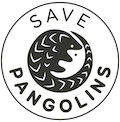Pangolin Tracking Science
New Guide: Advancing Pangolin Science - A review of current methods and future directions
This guide was developed to summarize best practices and tools for deploying pangolin tracking devices. The findings highlight relevant scientific literature, as well as the results of a new survey of practitioners regarding: transmitters, field logistics, and animal handling and welfare. Finally, this guide provides resources for pangolin conservation practitioners and researchers, including, a comprehensive table of transmitter specifications, three-dimensional (3D) printing protocols with model access links, a scale notching protocol, uniform passive integrated transponder (PIT)--tagging location, species-specific line diagrams, a practitioner directory, information about emerging nano-tag technology, and education and marketing materials.
Pangolin Universal Notching System (PUNS)
Based on the findings of the survey, the authors of the guide also created a new Pangolin Universal Notching System to unify notching efforts in the pangolin community. The protocol uses a numerical based code to communicate individual identification and/or sex through a series of notches involving scales on or adjacent to the dorsal midline. The full manuscript and Standard Operating Procedures are available online.
Pangolin Universal Notching System (PUNS) applied to a Temminck’s pangolin (Smutsia temminckii). (a) Dorsal view: On its stomach with the anterior (head) at the top of the image with the pangolin facing away from the observer. The first scale immediately left of the midline scale row at the pectoral girdle (shoulder) and the first scale immediately right of the midline scale row at the pectoral girdle are always 1 and 100, respectively. The first midline row scale between the 1 and 100 scales is male, and the fifth midline row scale is female. (b) Male Individual #7238 marked with the Pangolin Universal Notching System (PUNS): To identify number 7238, the 7000, 200, 20, 10, 7, and 1 scales as well as and the first scale in the midline, indicating male, are marked.
PIT Tagging Protocol
Based on survey results, the authors recommend adopting a uniform PIT tagging location to facilitate ease and consistency of scanning for tags when a new individual is encountered. For those practicing PIT tagging, utilizing the top of the thigh area of the right hind leg is recommended. This location is consistent with what is required for all pangolins being rehabilitated from trade in South Africa (APWG, 2022)*
* African Pangolin Working Group (APWG). (2022). Standard Operating Procedure (SOP) For All Pangolins Retrieved Out Of The Trade In South Africa, As Set Out By Government. https://africanpangolin.org/wp-content/uploads/2022/07/Standard-Operating-Procedures-web.pdf
Species-Specific Line Diagrams: These are open source line diagrams available for use for (left to right) Black-bellied, Sunda, Temmick’s, and White-Bellied pangolins. Artist credit to Sarah Crumb is appreciated.
3D Printing SOP and Links
The authors developed 3D models of pangolins and pangolin scales, which were modified from a 3D scan of a pangolin generously provided by the National Geographic Society. An accompanying 3D printing SOP provides guidance on how to physically print the models. The increasing accessibility of 3D printing technology presents a low-cost opportunity to create pangolin models that may be used to address these unique challenges of (1) training specialized handling techniques prior to working with live subjects in a high-stakes setting, (2) designing customized tracking devices, and (3) allowing individuals to interact with a pangolin, all without the need for a live subject. Therefore, these 3D printed models can help reduce the risk of unintended harm during human-pangolin interactions and increase overall pangolin welfare during any necessary handling (e.g., during transportation, deploying tracking devices, biological sampling, veterinary care).
Open source 3D Printing SOP and models for multiple species accessible at the links at the bottom of this document.



























